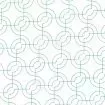- within Consumer Protection, Insolvency/Bankruptcy/Re-Structuring and Insurance topic(s)
On September 30, 2024, Judge Franklin U. Valderrama of the United States District Court for the Northern District of Illinois granted in part a motion to dismiss a putative class action asserting claims under the Securities Exchange Act of 1934 against an airplane manufacturing company and certain of its executives. Seeks v. The Boeing Company, No. 19‑2394, 2024 WL 4367846 (N.D. Ill. Sept. 30, 2024). Plaintiffs alleged that the company had made misrepresentations in public statements regarding the safety of its airplanes and in connection with two accidents involving company airplanes. After prior claims were dismissed without prejudice, plaintiffs added detail in support of their claims. The Court held that plaintiffs had sufficiently alleged falsity as to certain statements but not others and that scienter was adequately alleged.
The Court held that certain challenged statements regarding safety, such as "safety is a core value for us," were inactionable as immaterial puffery. Id. at *15. The Court also agreed with defendants that certain statements about the airplane's software, such as that the airplane was designed to "behave the same way in the hands of the pilot," were not actionable because they were "too vague" in referencing the company's "intentions" in designing the plane. Id. at *19. Similarly, the Court held that certain statements—such as the company expressing "confidence" in its airplane—amounted to "vague optimism" and were therefore not actionable. Id. at *21. Because the Court determined that plaintiffs failed to allege any actual misrepresentation by the company's CFO, the company dismissed him from the case.
The Court held that certain "more specific" safety statements, however, such as "[t]he airplane is safe" and "[w]e know how to fly it safely," were potentially actionable, even if they reflected opinion, because they were made in the context of assuring investors that the airplane was safe after a first accident, and a reasonable investor could have inferred that the statements were the result of the company's internal investigation. Id. at *15.
As to scienter, the Court held that plaintiffs sufficiently alleged that the company and its CEO either knowingly or recklessly made statements regarding existing operating procedures when they allegedly knew that the Federal Aviation Administration ("FAA") had instructed the company to make "significant changes" to the airplane's software for "safety purposes." Id. at *18. The Court further concluded that plaintiffs sufficiently alleged scienter as to a number of individuals who prepared and approved the company's statements regarding existing company procedures even though they allegedly had knowledge that the company's internal investigation had found problems with the airplane. Id.
As to loss causation, the Court held that plaintiffs had sufficiently alleged corrective disclosures following the first accident, including a news article that allegedly revealed in part "several fundamental flaws in the [airplane's] safety analysis and design that materially exacerbated safety concerns with the plane." Id. at *20. The Court also held that plaintiffs sufficiently connected specific safety statements made after the second accident with a corrective disclosure in the form of public statements revealing that certain company employees had known of safety issues prior to the two accidents. Id. The Court held the second accident could also plausibly constitute a corrective disclosure at the pleading stage based on plaintiffs' allegations that the accident "corrected prior safety statements and existing procedure statements," but it noted that it was "somewhat skeptical" that plaintiffs could ultimately prove that the second accident qualified as a corrective disclosure. Id.
The content of this article is intended to provide a general guide to the subject matter. Specialist advice should be sought about your specific circumstances.

